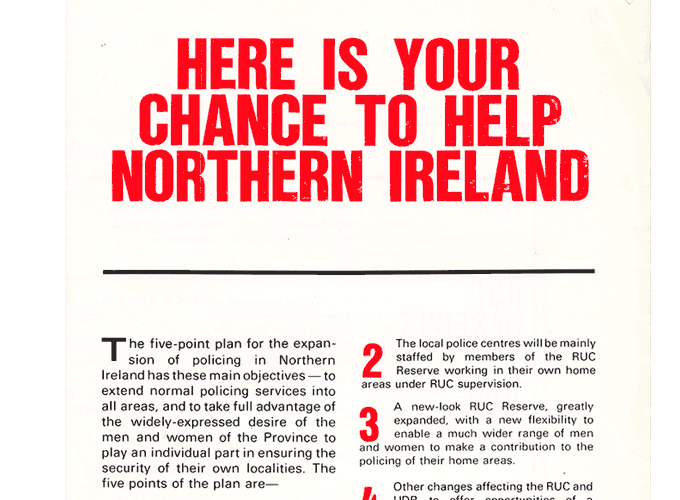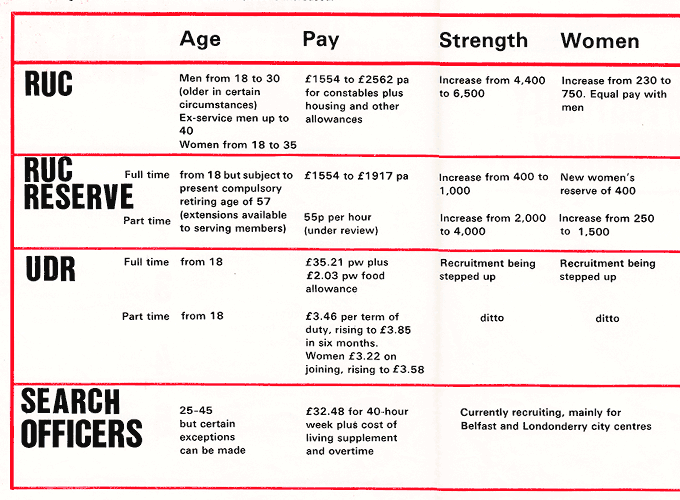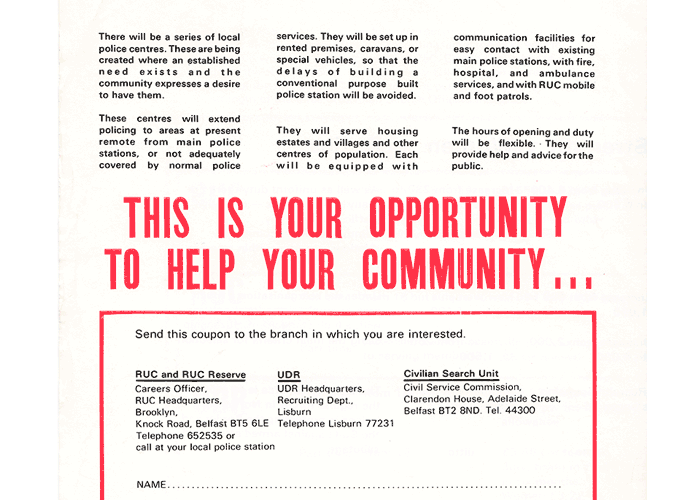Description
A recruitment leaflet for the expanded police service in Northern Ireland. Since its deployment in 1969, the British army remained the primary agent of civil power in Northern Ireland. In January 1976, the government commissioned a report, The Way Ahead, to explore new procedures for expanding police responsibility and reducing the number of troops on the ground. In April, Kenneth Newman was appointed the new chief constable. He used the report as the basis for changes in the organisation of the Royal Ulster Constabulary (RUC). A full page advertisement appeared in local papers in May, announcing the new policy of police primacy or “Ulsterisation”.
In order to reintroduce the RUC as the main agent for law and order, Newman needed to improve morale and confidence, increase man power and implement better equipment and training. With a larger budget he started to expand the force. He planned to double the strength of the RUC to 10,000 at a rate of 500 new recruits every year, with an increased RUC Reserve and Ulster Defence Regiment (UDR) to provide additional support. The police were issued with Bristol body armour, riot shields, batons, rifles, carbines, handguns and Federal riot guns that fired plastic bullets. New armoured Land Rovers and armoured patrol cars were ordered and a new training programme modeled on the British army’s methods of public order and riot control was introduced.
Newman believed that it was only through “unspectacular process – the impartial professional application of the law that terrorism will be defeated”. Newman’s leadership gave members of the force a new sense of purpose and morale improved. Police started to take a lead in maintaining law and order with military back up from an expanded UDR, allowing 500 more troops to leave. In January 1977, the chief constable and chief officer commanding (GOC) signed a joint directive acknowledging RUC primacy. The policy received some criticism for being too lenient but attrition rates improved. By the end of the final quarter of 1976, the number of deaths decreased by 30%, explosions were down 11%, weapons seizures up 50%, and 708 suspects were charged.




